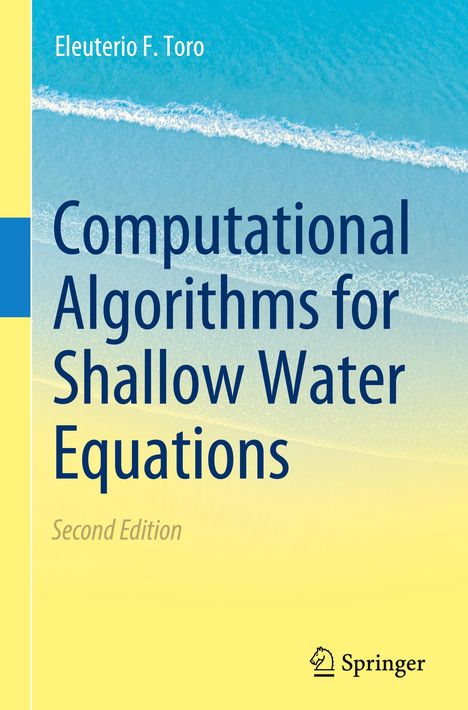Eleuterio F. Toro: Computational Algorithms for Shallow Water Equations, Gebunden
Computational Algorithms for Shallow Water Equations
(soweit verfügbar beim Lieferanten)
- Verlag:
- Springer Nature Switzerland, 08/2024
- Einband:
- Gebunden, HC runder Rücken kaschiert
- Sprache:
- Englisch
- ISBN-13:
- 9783031613944
- Artikelnummer:
- 11937238
- Umfang:
- 424 Seiten
- Nummer der Auflage:
- 24002
- Ausgabe:
- Second Edition 2024
- Gewicht:
- 876 g
- Maße:
- 241 x 160 mm
- Stärke:
- 27 mm
- Erscheinungstermin:
- 2.8.2024
- Hinweis
-
Achtung: Artikel ist nicht in deutscher Sprache!
Klappentext
This book is a thoroughly revised and enlarged version of ¿Shock-capturing methods for free-surface shallow flows", first published by Wiley and Sons, 2001. The book describes mathematically free-surface flows through partial differential equations and includes modern shock-capturing methods to solve them, with strong emphasis on finite volume upwind and centred methods. Such equations and methods are fundamental in simulating shallow water flows but also atmospheric flows, dispersion of dense gases and the dynamics of mixtures of materials.
The book is accompanied by numerical software in the form of sample computer programs as supplementary material. In this new edition, additional sections have been introduced to existing chapters. Also, new chapters have been included; one contains a review of the mathematics of hyperbolic partial differential equations, another introduces the numerical analysis of partial differential equations and another one deals with advanced very-high order numerical methods in the finite volume and discontinuous Galerkin frameworks. Furthermore, comprehensive modifications and corrections have been made throughout various sections of the text, and numerous figures depicting numerical results have been enhanced.
This book is primarily intended for environmental scientists, applied mathematicians and engineers in academia, research laboratories, industry and consultancy organisations. Senior undergraduate and postgraduate students involved with mathematical modelling and computational methods for environmental problems will benefit from studying this book. Lecturers could use most of the material for courses on numerical methods for wave propagation problems in hydraulics, oceanography, atmospherics and other geophysical fluid dynamics contexts.


